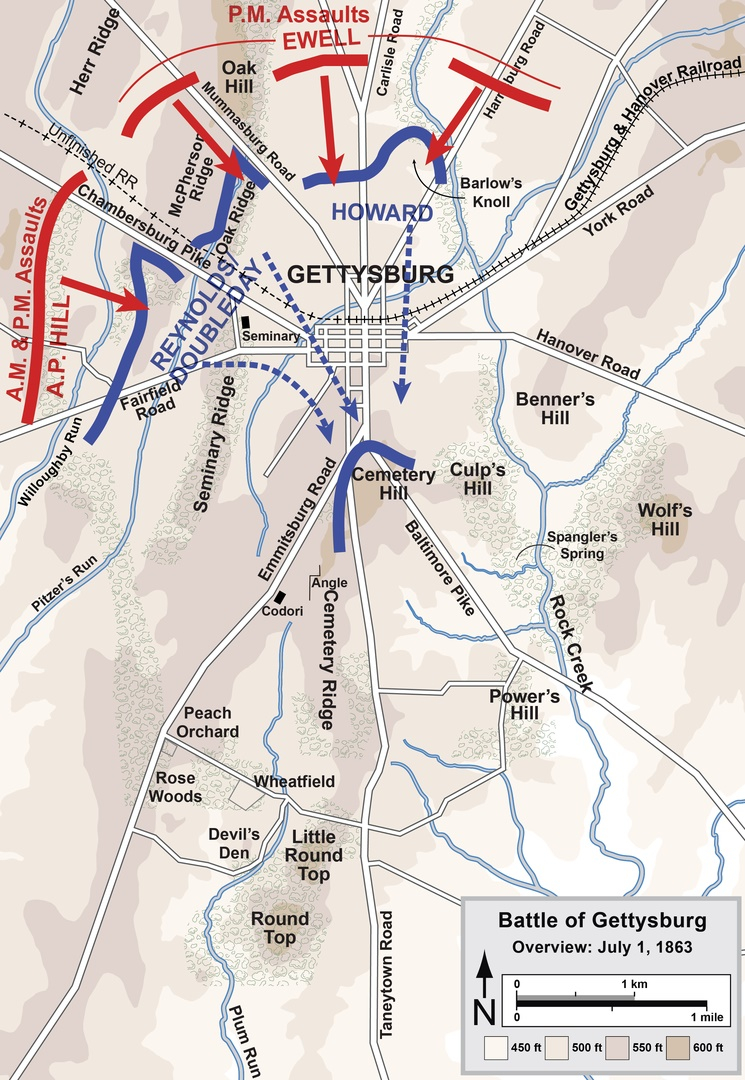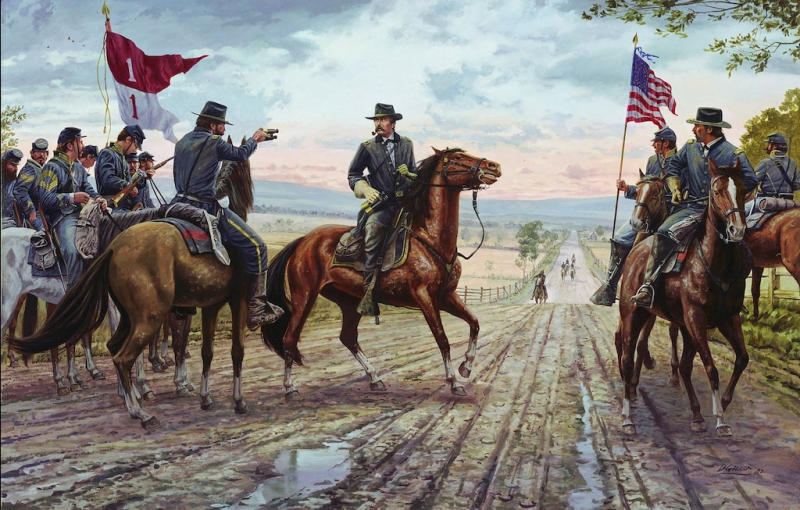The combat on the First Day was far larger than is commonly depicted
It is a fact that the combat on the First Day was far larger than is commonly depicted. The first day of the American Civil War, July 1, 1863, began with a confrontation between isolated forces of the Army of Northern Virginia led by Confederate General Robert E. Lee and the Army of the Potomac led by Union Maj. Gen. George G. Meade. It quickly grew into a massive fight, with the outnumbered and defeated Union forces retiring to the high ground south of Gettysburg, Pennsylvania.
As warriors began to arrive on the battlefield, the first day of fighting unfolded in three stages. Two brigades of Confederate Maj. Gen. Henry Heth's division (of Lt. Gen. A.P. Hill's Third Corps) were held up in the morning by dismounted Union cavalrymen led by Brig. Gen. John Buford. The Union XI Corps, headed by Major General Oliver Otis Howard, had arrived by early afternoon, and the Union position was in a semicircle from west to north of town. Although the Union lines were under intense pressure, the salient at Barlow's Knoll was overcome.
The third phase of the combat began when Rodes repeated his attack from the north and Heth returned from the west with his entire division, accompanied by Maj. Gen. W. Dorsey Pender's division. The Union line was finally breached after heavy fighting in Herbst's Woods and on Oak Ridge. Despite Robert E. Lee's discretionary orders to take the heights if practicable, Richard Ewell chose not to attack.










